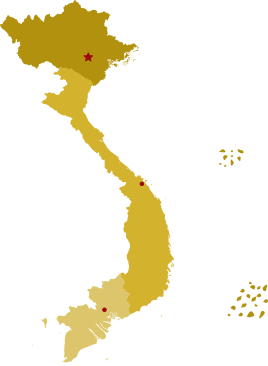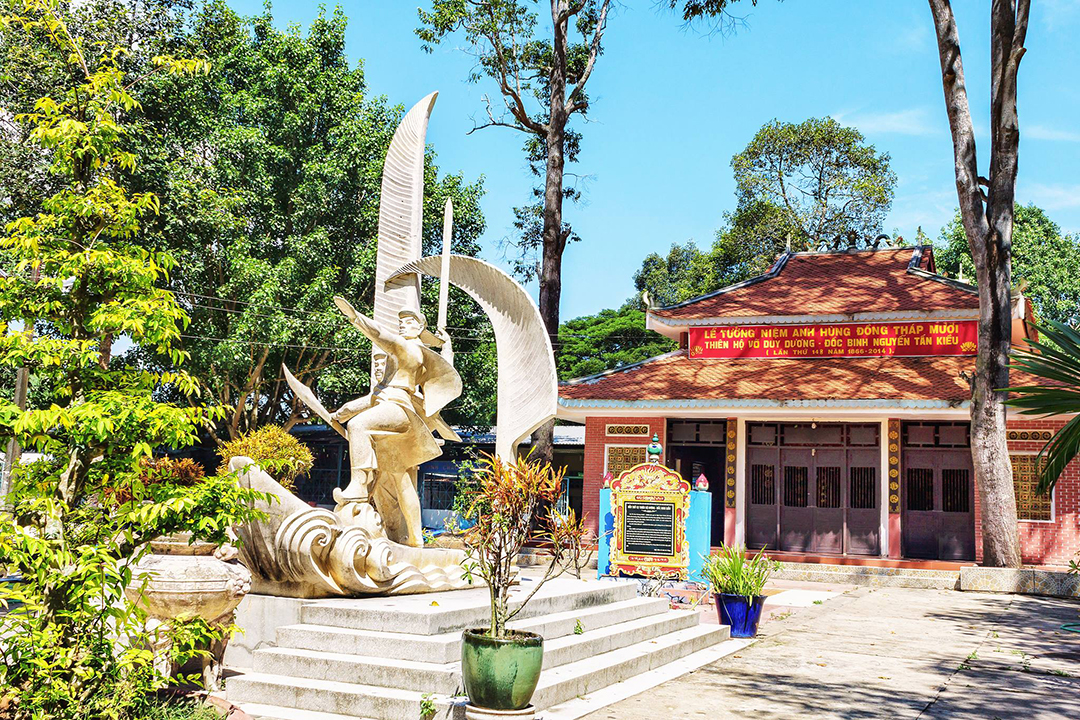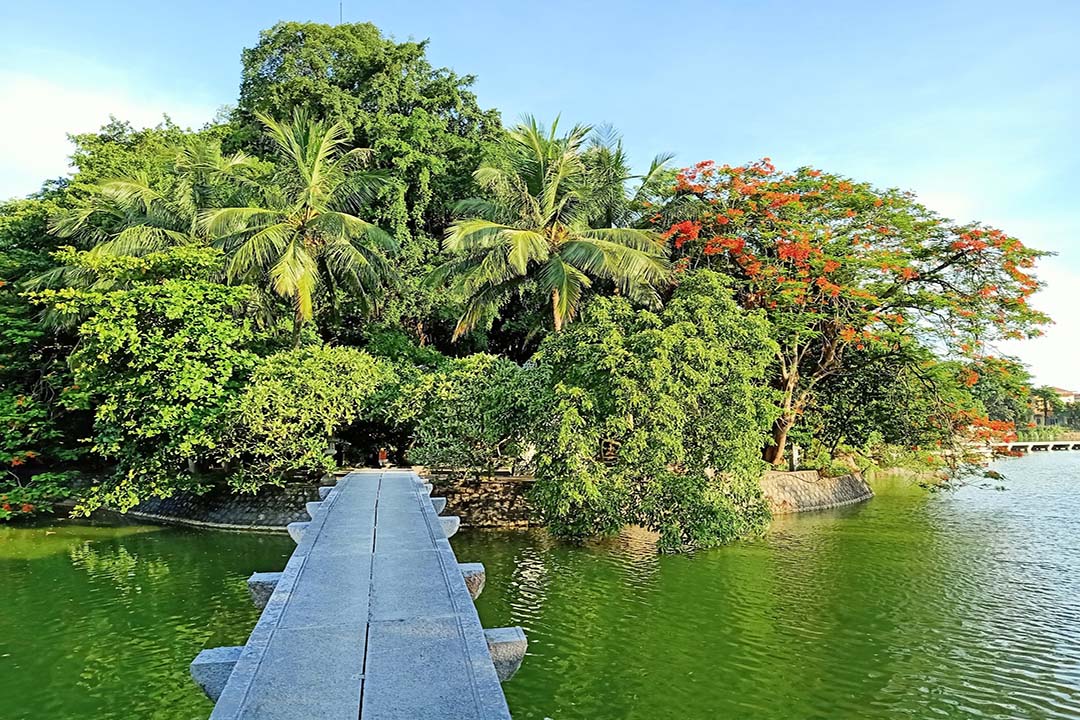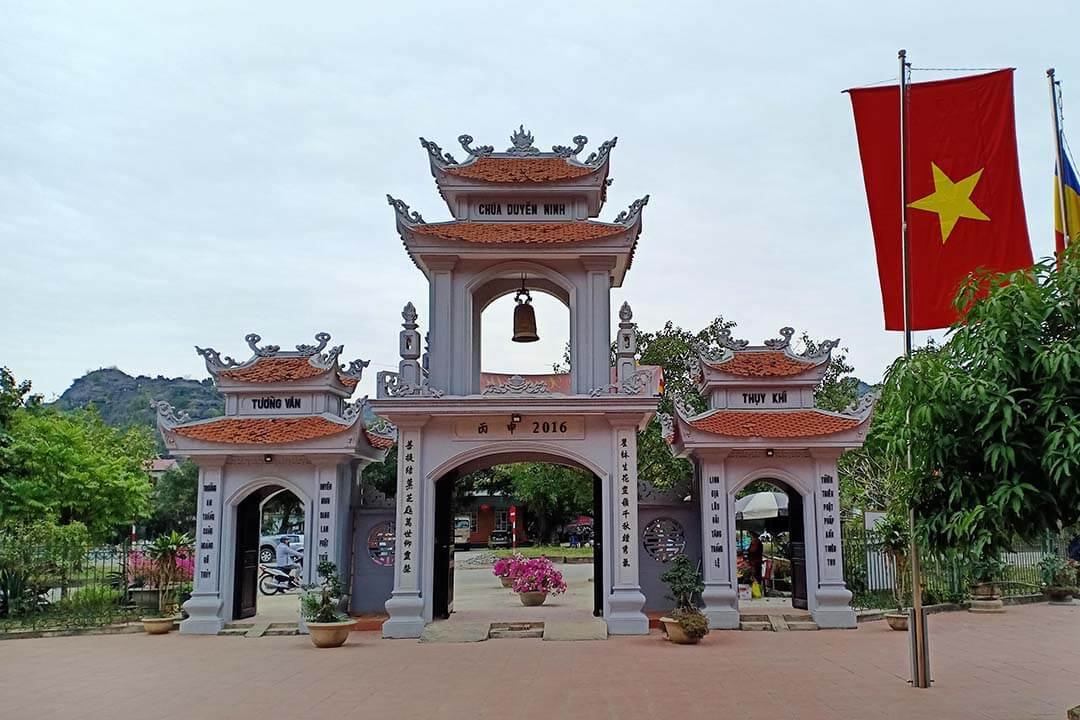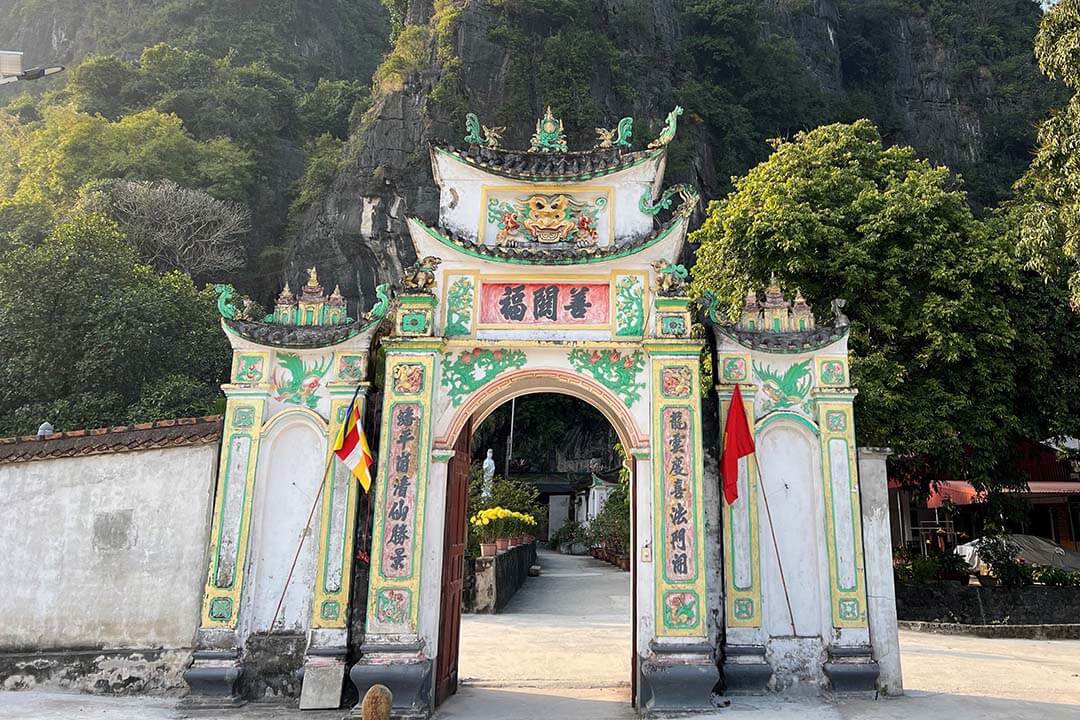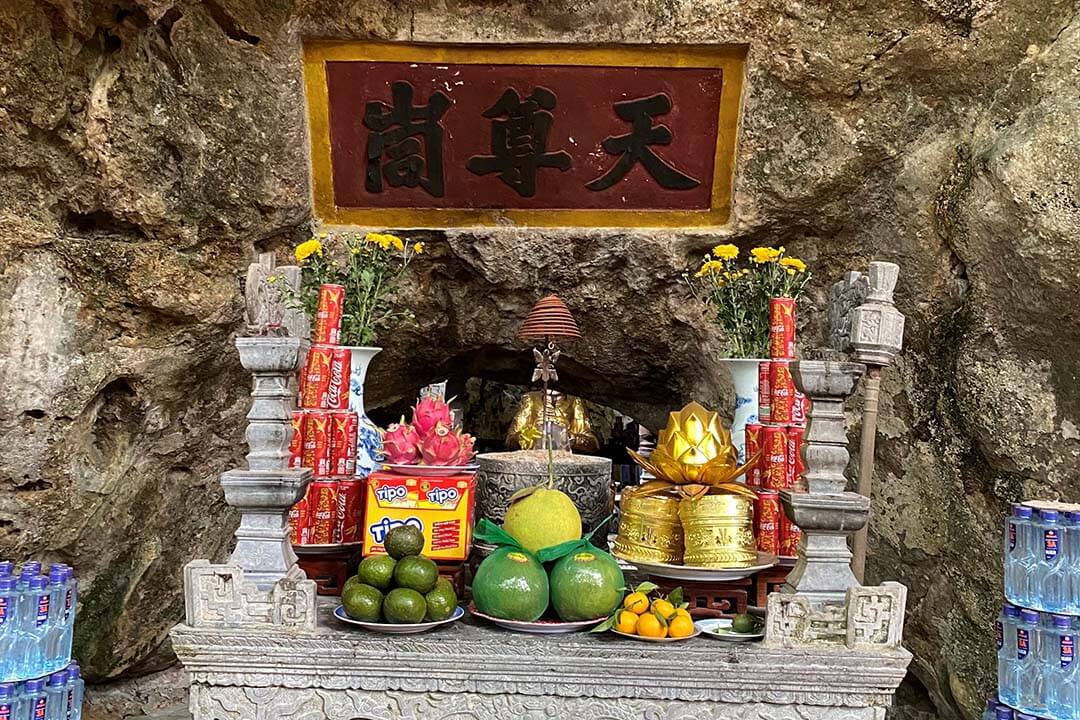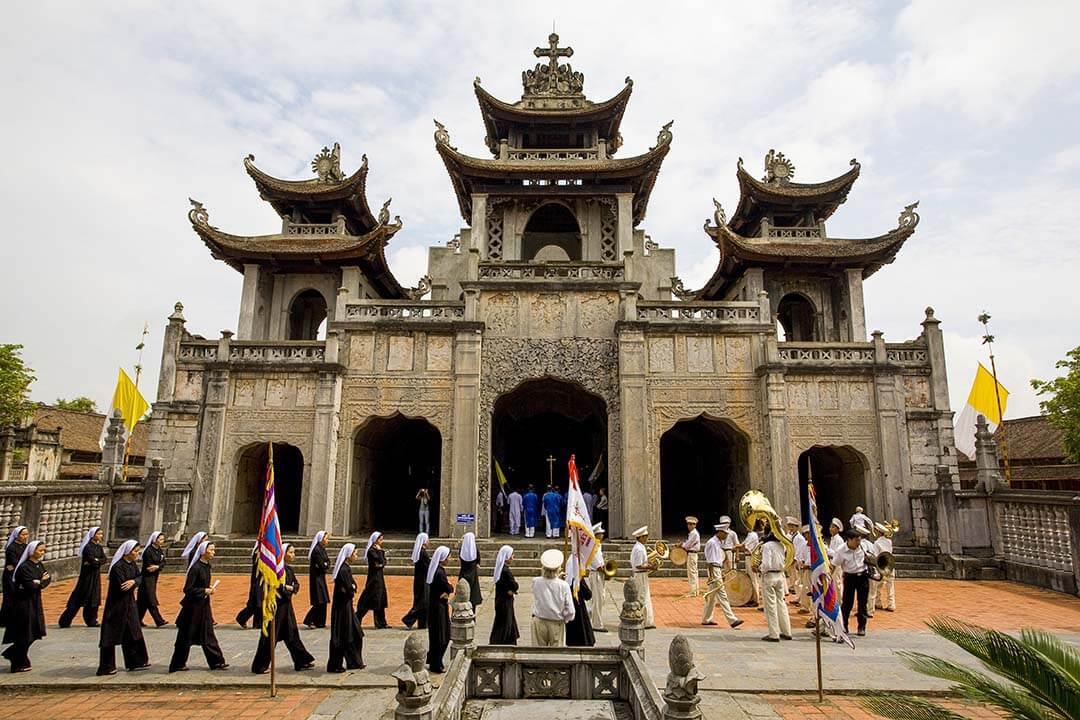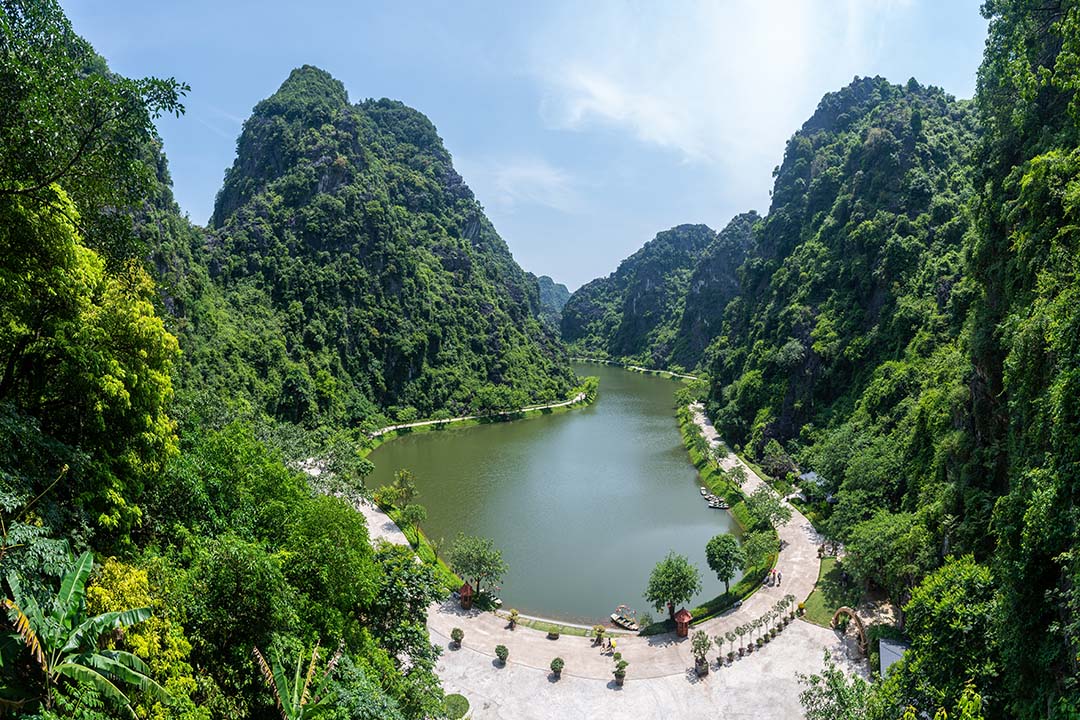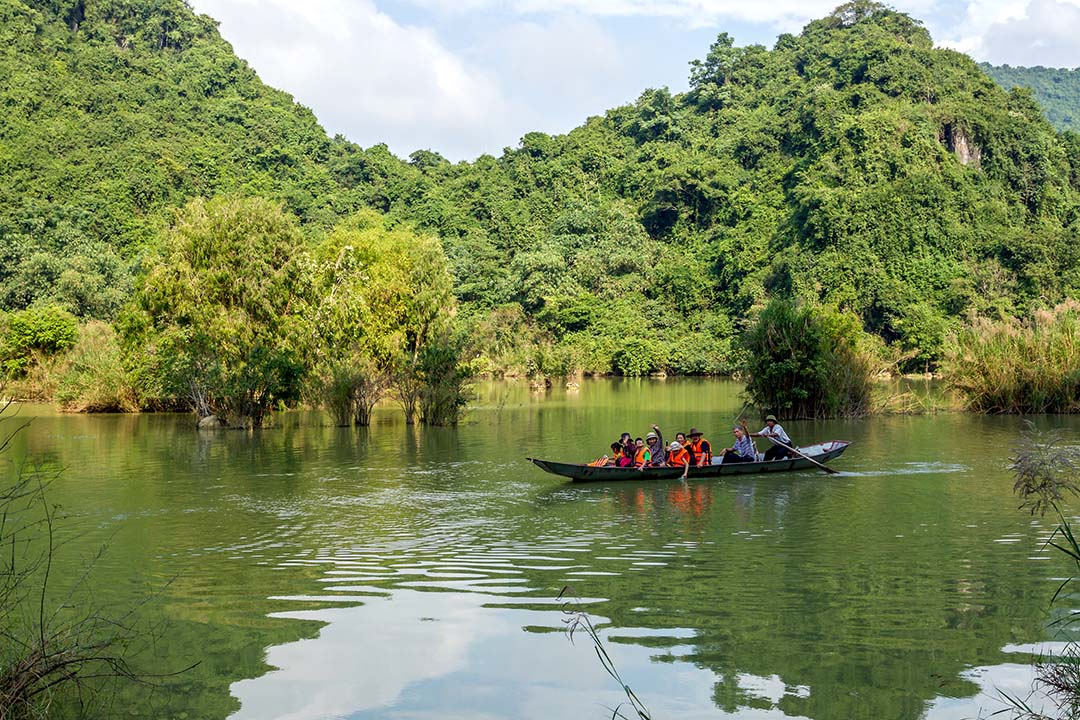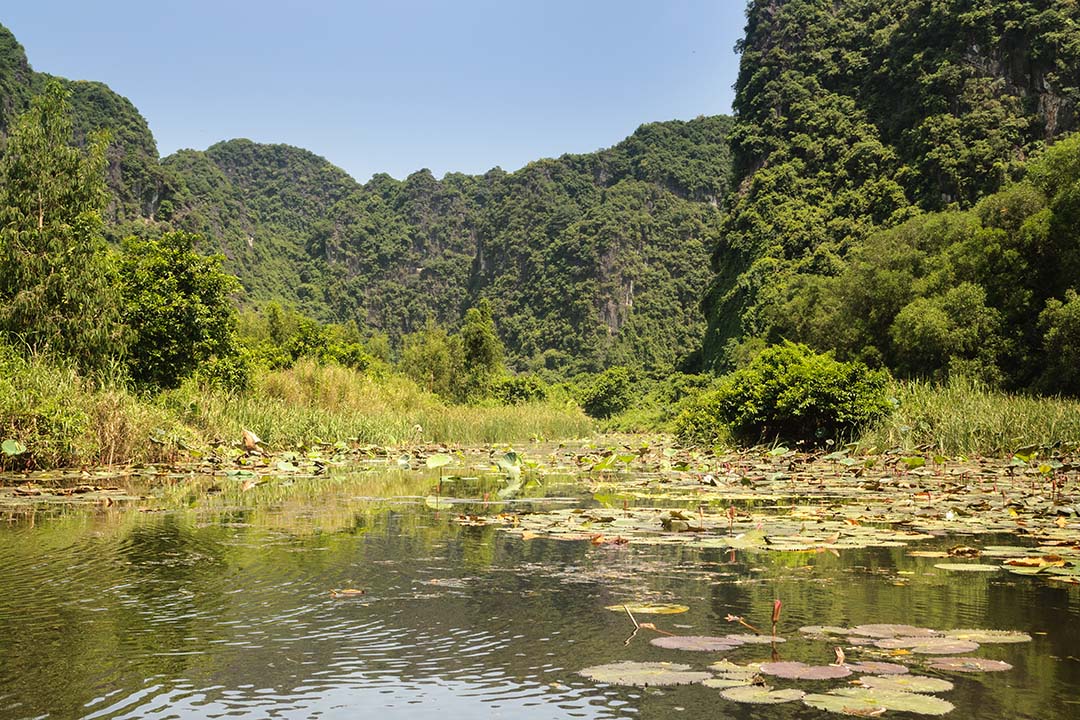Sep - 17 - 2025
Bai Dinh Pagoda is recognized as the largest pagoda complex in Vietnam and has achieved many remarkable achievements. The pagoda is home to Asia’s largest gilded bronze Buddha statue, the longest Arhat corridor and the largest bronze Maitreya Buddha statue in Southeast Asia. The largest pagoda in Vietnam and holds the most records and is also the most famous pagoda among the pagodas in Ninh Binh.
Bai Dinh Pagoda is located at the western gateway of the ancient capital of Hoa Lu. Bai Dinh Pagoda sits on National Highway 38B in Tay Hoa Lu Ward, Ninh Binh Province (Gia Sinh Commune, Gia Vien District, Ninh Binh Province), just 15 km from Ninh Binh City and 95 km from Hanoi. The pagoda is situated in the northern area of the Trang An Scenic Landscape Complex.
You often have many questions about Bai Dinh Pagoda, such as who worships it, what makes it famous, what the entrance fee is, and who owns it. This article from GTrip will provide insight into the interesting aspects of Bai Dinh Pagoda, including its history, location, architectural features, national records, and the activities you can experience when visiting this pagoda.
Opening hours and entrance fee of Bai Dinh Pagoda
Bai Dinh Pagoda operates daily, welcoming you from 6:00 AM to 10:00 PM. This generous schedule offers ample time for guests to explore the pagoda’s stunning architecture and spiritual significance.
Regarding admission, the entrance fee to Bai Dinh Pagoda is free, allowing everyone to enjoy the site without cost. The pagoda also provides an electric car service for those who prefer a more convenient way to navigate the area. This service charges 60,000 VND per person per trip and operates until 8:00 PM.
If you want to ascend the Bao Thap Tower, purchase a ticket priced at 50,000 VND per person. Additionally, parking is available for a fee of 40,000 VND per car and 15,000 VND per motorbike, ensuring accessible options for all guests.
Overall, Bai Dinh Pagoda offers a rich cultural experience and prioritizes convenience with its well-defined operating schedule and straightforward fee structure. This makes it an ideal destination for both spiritual reflection and exploration.

The scenery of the largest Bai Dinh Pagoda
The history of Bai Dinh Pagoda
Bai Dinh Pagoda has a rich and fascinating history that dates back to ancient times. The Bai Dinh Pagoda boasts a rich history dating back to 1136, when national monk Nguyen Minh Khong founded it during the Ly Dynasty. The original structure was cleverly built within a nearby cave, symbolizing the harmony between nature and spirituality. Over the centuries, it became a revered Buddhist worship site, attracting many You and pilgrims.
A major expansion in 2003 transformed Bai Dinh into a vast complex located on the mountainside. The new pagoda combines traditional architectural styles with modern elements, enhancing its aesthetic appeal and functionality. This development solidified its status as one of Vietnam’s most important cultural and spiritual landmarks.
Today, Bai Dinh Pagoda is a testament to Buddhism’s rich history and enduring significance in Vietnam, attracting thousands of travellers each year. They come to admire its grandeur and seek spiritual enlightenment.

A corner of Bai Dinh Pagoda
Architectural features of Bai Dinh Pagoda
Bai Dinh Pagoda presents an appealing blend of old and new sections, combining the ancient Bai Dinh temple with newly constructed structures added during a modern expansion. This combination reflects a rich historical heritage and the evolution of Buddhist architecture in Vietnam.
The complex showcases unique Vietnamese Buddhist architecture, characterized by traditional elements such as sloping tiled roofs. Which adds aesthetic value and helps the pagoda withstand the region’s weather conditions. The design includes large courtyards encouraging community gatherings, and quiet reflection, and intricate carvings highlighting artisans’ skills.
The scale and layout of the pagoda complex span approximately 539 hectares, making it one of the largest in Vietnam. The expansive grounds include multiple halls dedicated to various Buddhist deities, countless statues, and peaceful natural landscapes, creating a serene atmosphere.
The corridors are adorned with thousands of Arhat statues, each representing a unique figure in Buddhist lore, further emphasizing the site’s spiritual significance. This harmonious integration of architecture, design, and natural elements enhances You’ experience and solidifies Bai Dinh Pagoda’s cultural importance.
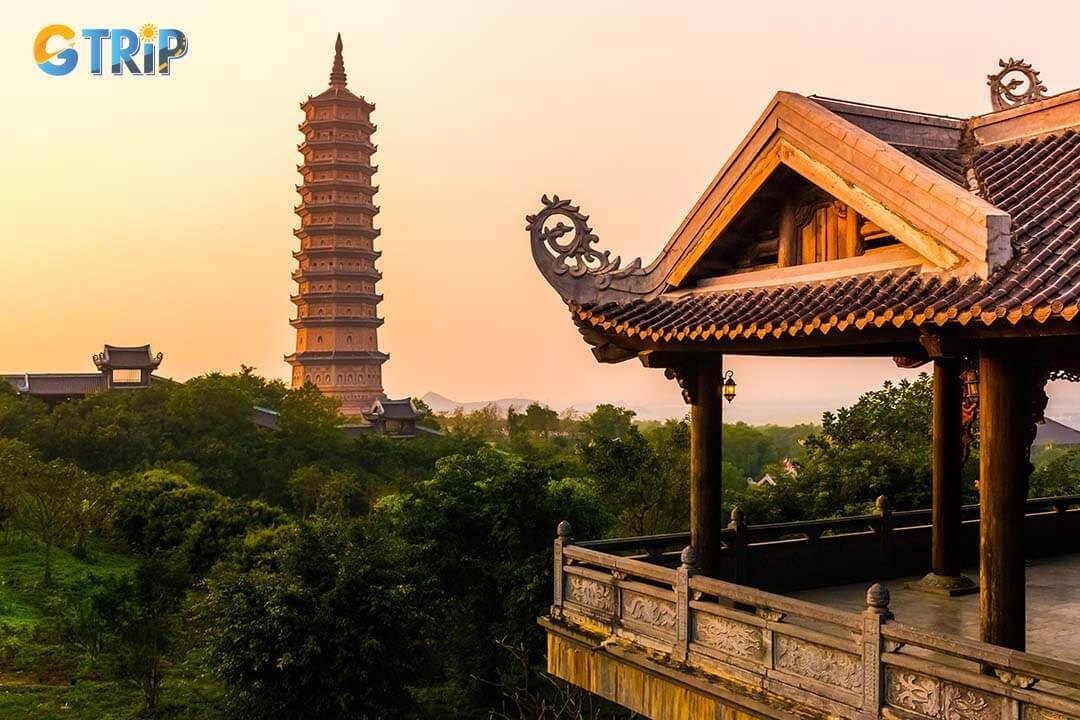
View of stupa in Bai Dinh Pagoda
Notable highlights of Bai Dinh Pagoda
Bai Dinh Pagoda is widely known for its impressive architectural structures. We had the opportunity to visit and admire the remarkable designs of this pagoda, which holds several Asian records.
The largest bronze Buddha statue in Asia
At the heart of Bai Dinh Pagoda is a golden-plated bronze statue of Buddha Shakyamuni, weighing 100 tons. With its intricately carved details, this statue is situated in the main hall and symbolizes peace, wisdom, and compassion. The scale and beauty of this statue make it a must-see for pilgrims and tourists alike. Surrounded by serene landscapes and lush greenery, the statue provides a tranquil atmosphere for reflection and meditation.
The arhat corridor
Another highlight of Bai Dinh Pagoda is the Arhat corridor, which is the longest corridor in Vietnam and Southeast Asia. This corridor stretches around the pagoda area and features 500 stone Arhat statues, each depicting a unique expression and pose, representing various stages of enlightenment. This adds a profound spiritual depth to the pagoda complex.
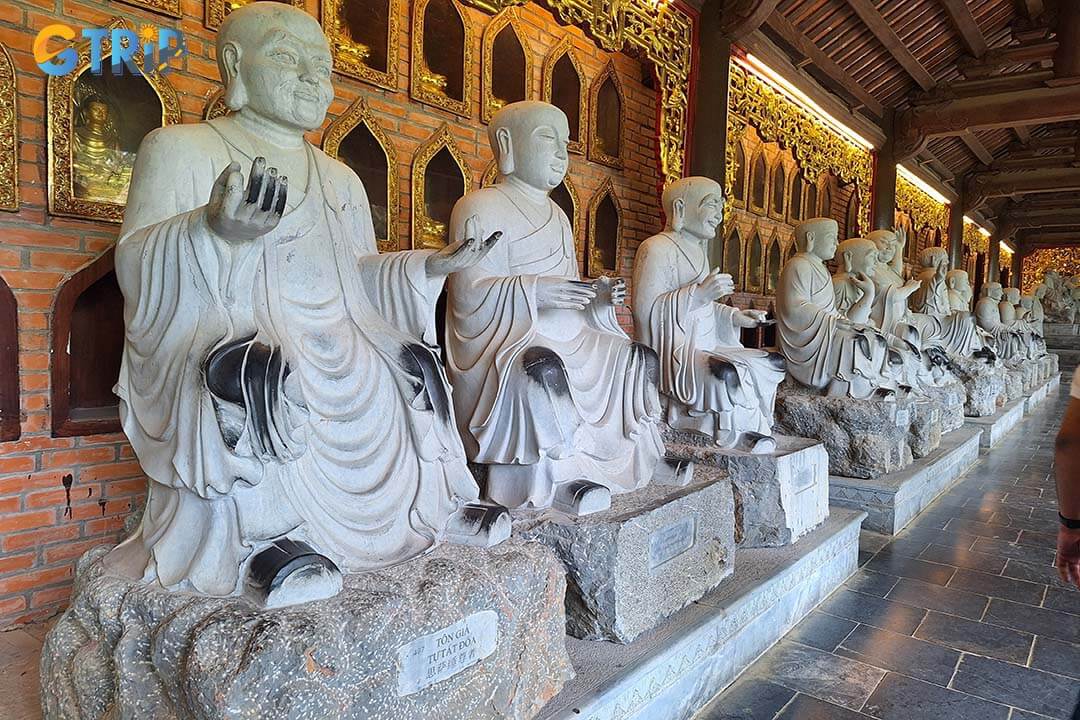
The Arhat Corridor at Bai Dinh Pagoda
The bell tower
The Bell Tower at Bai Dinh Pagoda houses the largest bronze bell in Vietnam, weighing 36 tons, standing 5.5 meters tall, and with a diameter of 3.45 meters. This bell is an architectural marvel and offers a resonant sound experience that spreads tranquility throughout the area. You often gather to listen to its harmonious tones, which are believed to bring blessings and good fortune to those who hear it.
The stupa
Standing 13 stories high, the Stupa is one of the most revered structures at the pagoda, containing relics of the Buddha. You can ascend to the upper levels to enjoy stunning views of the mountains, rivers, and surrounding pagodas. The sacred significance of the Stupa makes it an important focal point for those seeking a deeper spiritual connection.
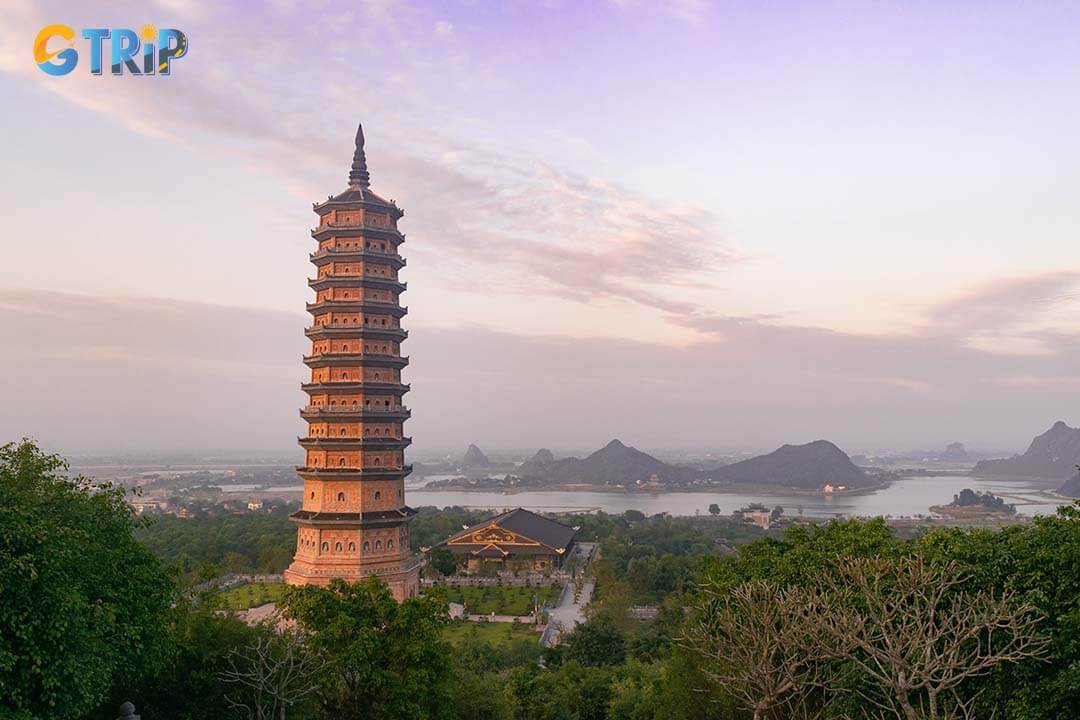
Bai Dinh Pagoda sunset purple sky landscape
Religious significance and practices
Bai Dinh Pagoda embodies profound religious significance and serves as a center for various spiritual practices. The pagoda represents a sacred space where devotees can engage in worship, prayers, and rituals that hold deep meaning in their faith.
Annual festivals: The Bai Dinh Pagoda Festival, which takes place on the 6th day of the first lunar month, attracts thousands of pilgrims yearly. This vibrant event welcomes devotees from all over, allowing them to participate in communal worship and celebrate their shared beliefs. Throughout the festival, colorful processions, traditional music, and cultural performances enrich the atmosphere, creating a festive spirit that resonates with both locals and visitors.
Buddhist ceremonies: Regular ceremonies and prayers are conducted at the pagoda to support peace, health, and prosperity among the community. These rituals symbolize the devotion of the followers and their commitment to spiritual growth. Special ceremonies are often held during significant Buddhist holidays, drawing larger crowds and fostering a deeper sense of community and faith among participants.
Pilgrimage site: Bai Dinh is known as a significant pilgrimage site where individuals come for spiritual reasons. You seek to pray and meditate in the serene atmosphere, making it an ideal location for reflection and connection with your faith. The tranquil surroundings, combined with the majestic architecture, create a powerful environment for introspection and spiritual renewal.
Major festivals and cultural events at Bai Dinh Pagoda
The festival in Bai Dinh Pagoda provides an overview of important religious festivals and gatherings at Bai Dinh. The festival includes the annual pagoda festival and Buddhist holidays, showcasing the site’s cultural and spiritual significance.
Bai Dinh Pagoda Festival (6th day of the first lunar month)
The festival is held annually on the sixth day of the first lunar month and lasts until the end of March. This grand festival marks the beginning of spring in Ninh Binh. The event features traditional rituals, processions, and offerings, attracting thousands of pilgrims and tourists. Highlights include prayer rituals, vibrant processions, floral and incense offerings to honor Buddha, and cultural performances celebrating local heritage.
We attended the festival at Bai Dinh Pagoda. In addition to witnessing the rituals, which included offerings and the procession, we immersed ourselves in the festive atmosphere. The festivities included many exciting activities, such as folk games and performances like “cheo” and “xam” singing. This festival attracts many participants, so if you have the time, make sure to visit Bai Dinh Pagoda and participate in the celebration!
Special days
Bai Dinh also observes key Buddhist holidays, including Vesak Day (the 15th day of the fourth lunar month). Celebrating Buddha’s birth, enlightenment, and passing, and Ullambana (the 15th day of the seventh lunar month), a day to honor ancestors. These events bring devotees together for rituals, prayers, and meditative practices, fostering a shared sense of spiritual devotion and cultural pride.
Nearby attractions around Bai Dinh Pagoda
Bai Dinh Pagoda has many nearby attractions that enhance the spiritual and cultural experience. These landmarks include natural wonders, historical sites, and points of interest that provide a deeper understanding of the region’s heritage.
Trang An Landscape Complex
Recognized as a UNESCO World Heritage Site, Trang An is famous for its stunning boat tours through limestone caves and along serene rivers. This eco-tourism destination offers an immersive experience in breathtaking nature, as boats glide past majestic cliffs, lush greenery, and crystal-clear waters.
The area includes several caves, such as Sang Cave, Toi Cave, and Nau Ruou Cave, each featuring unique rock formations and marvelous stalactites. Participating in a boat tour here is especially popular and is considered one of the must-try things to do in Ninh Binh. As a landscape complex, Trang An allows you to explore the natural beauty and tranquility of Vietnam in a preserved and protected environment.
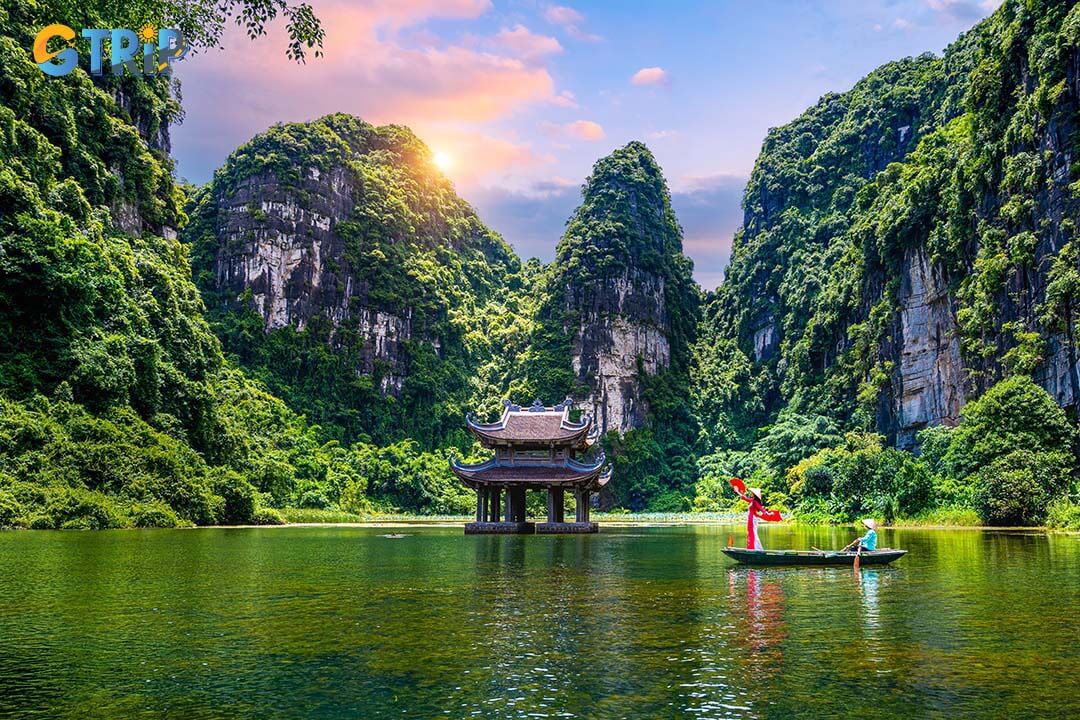
Asian women wearing red traditional vietnamese cultural clothing on a boat floating in the river flowing through the mountains at Trang An
Hoa Lu Ancient Capital
Hoa Lu served as the capital of Vietnam during the 10th and 11th centuries under the Dinh and Le dynasties. This area boasts well-preserved ancient monuments, including the Dinh Temple and the Le Temple, built to honor the kings of these early dynasties.
The ancient capital provides a historical context for the country’s development, including remnants of ancient palaces and citadels. You can stroll through the historic grounds, where temples, tombs, and other monuments offer insight into Vietnam’s early history and royal heritage.
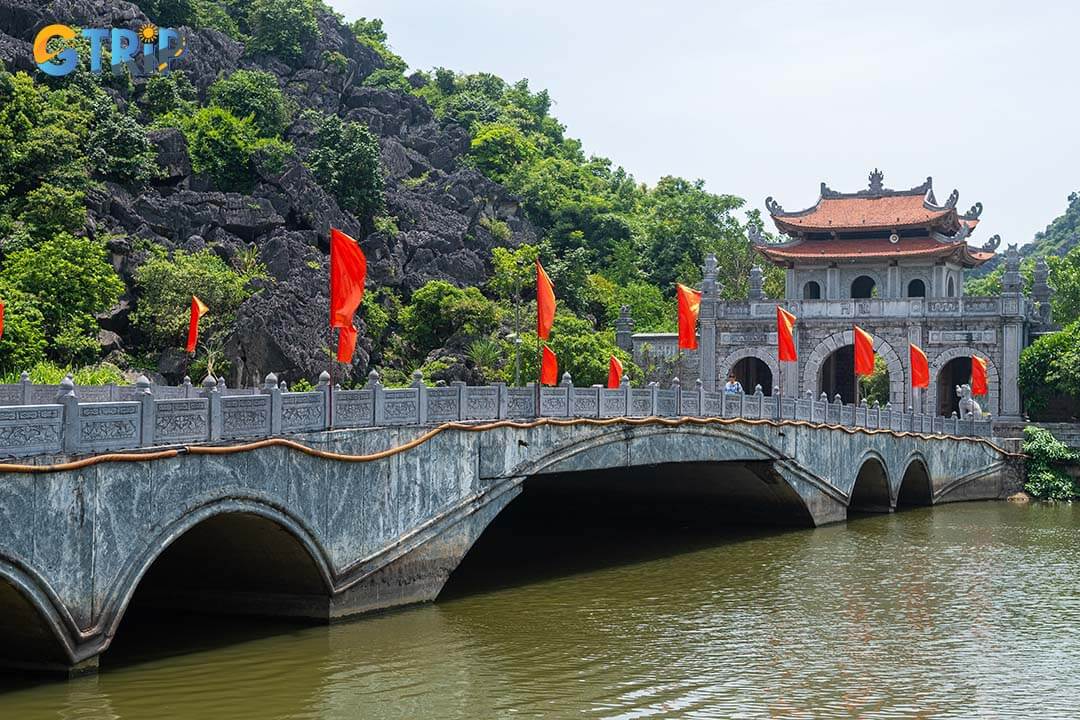
Views of Hoa Lu Ancient Capital
Am Tien Cave
Nestled in a tranquil valley, Am Tien Cave is known for its serenity and rich history, often associated with the life of Queen Duong Van Nga and legends from the Hoa Lu period. You can access the cave by crossing a peaceful lake that reflects the surrounding cliffs and vegetation.
The cave’s calm atmosphere and surrounding natural beauty have made it a popular pilgrimage site. Its reputation as a “forgotten paradise” gives it a distinct, almost mystical charm, making it ideal for those seeking a quiet and sacred space away from the crowd.
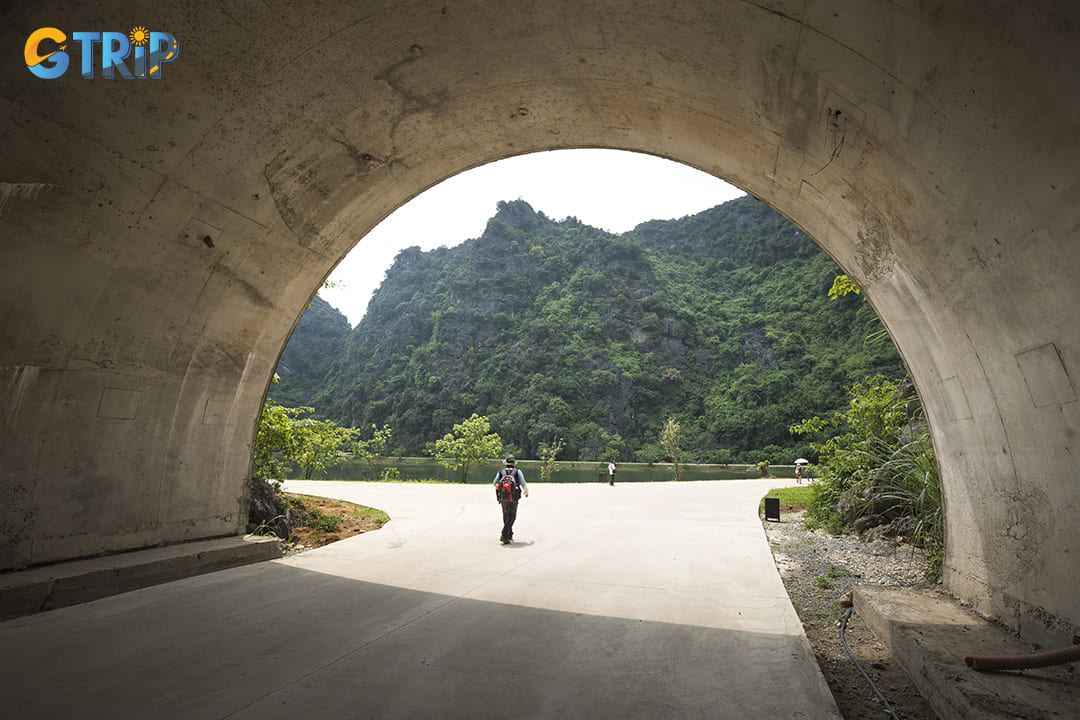
The entrance of Am Tien Cave
How to get to Bai Dinh Pagoda
There are many ways to move to Bai Dinh Pagoda, you can consider the following ways of moving
From Hanoi:
Located approximately 95 km from Hanoi, Bai Dinh Pagoda is a popular day trip for those visiting the capital. The journey typically takes around 2.5 – 3 hours by car or motorbike, depending on traffic conditions.
Buses run regularly from major Hanoi bus stations, such as Giap Bat and My Dinh, offering a convenient option for travelers. For those preferring more flexibility, private cars or rental motorbikes are widely available in Hanoi for a scenic drive through the countryside to Ninh Binh.
Learn more about the routes and types of transportation from Hanoi to Ninh Binh for a trip to explore Bai Dinh Pagoda now.
Local transportation options:
Bai Dinh Pagoda is just 15 km from Ninh Binh City and only 7 km from the ancient Hoa Lu Citadel, making it easy to explore nearby attractions. From Ninh Binh City, visitors can take a taxi or electric car directly to the pagoda, or opt for a bicycle ride to experience the serene landscapes and countryside at a relaxed pace. The pagoda complex itself is extensive, and electric cars are available within the grounds to help visitors move easily between temples and major sites.
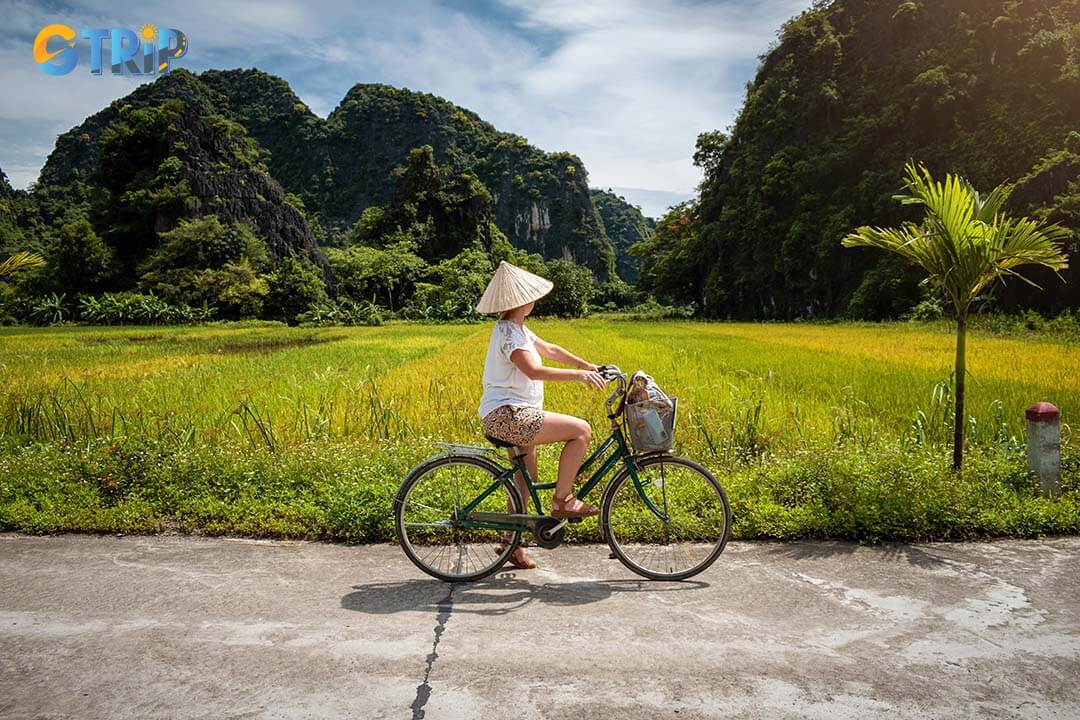
Tourist riding a bicycle through rice fields in Ninh Binh
Practical tips for visiting Bai Dinh Pagoda
Visiting Bai Dinh Pagoda offers a rich cultural experience, and a few practical tips can help make your visit enjoyable and respectful.
- Best time to visit: The ideal time to visit Bai Dinh Pagoda is in spring because this is the season when the climate in Ninh Binh is the mildest, especially during the festival season in the first lunar month when the complex is beautifully adorned, and local festivities bring the temple to life.
- Dress code and etiquette: Bai Dinh Pagoda is a sacred space, so modest clothing is advised. It’s respectful to cover your shoulders and knees, and remember to remove shoes when entering prayer halls. A respectful approach to photography is also encouraged within the temple.
- Entrance fees and opening hours: Open daily from 6 AM to 6 PM, Bai Dinh Pagoda has free entry to the main complex, though certain areas or services, like the electric car or boat rides, may have additional fees.
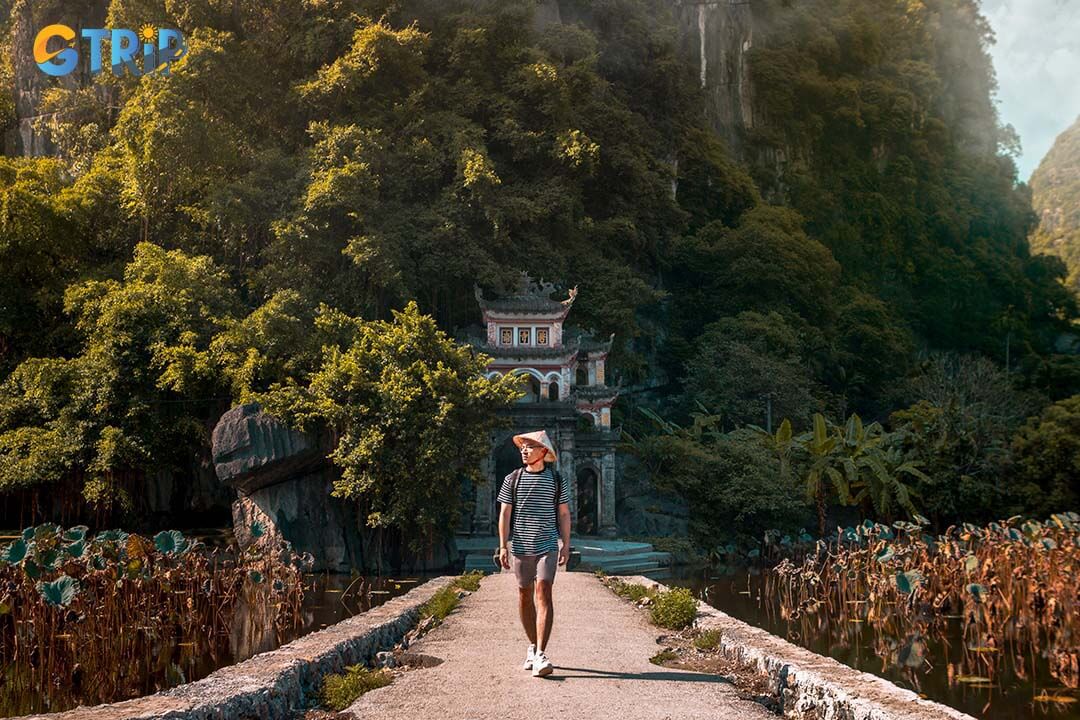
Tourist man is wearing non la in Ninh Binh
Is Bai Dinh Pagoda worth visiting?
Yes, a visit to Bai Dinh Pagoda promises to be a journey through a remarkable architectural site and an enriching experience that deepens one’s understanding of Vietnam’s spiritual, cultural, and historical landscape.
The spiritual and cultural hub
Bai Dinh Pagoda is a remarkable architectural achievement, featuring stunning sculptures and intricate designs that reflect the artistry of Vietnamese culture. More than just a beautiful site, it is a significant spiritual center for Buddhist followers, attracting thousands of pilgrims who come to pray, meditate, and seek enlightenment. The atmosphere is imbued with a sense of peace and devotion, making it a perfect place for reflection and spiritual rejuvenation.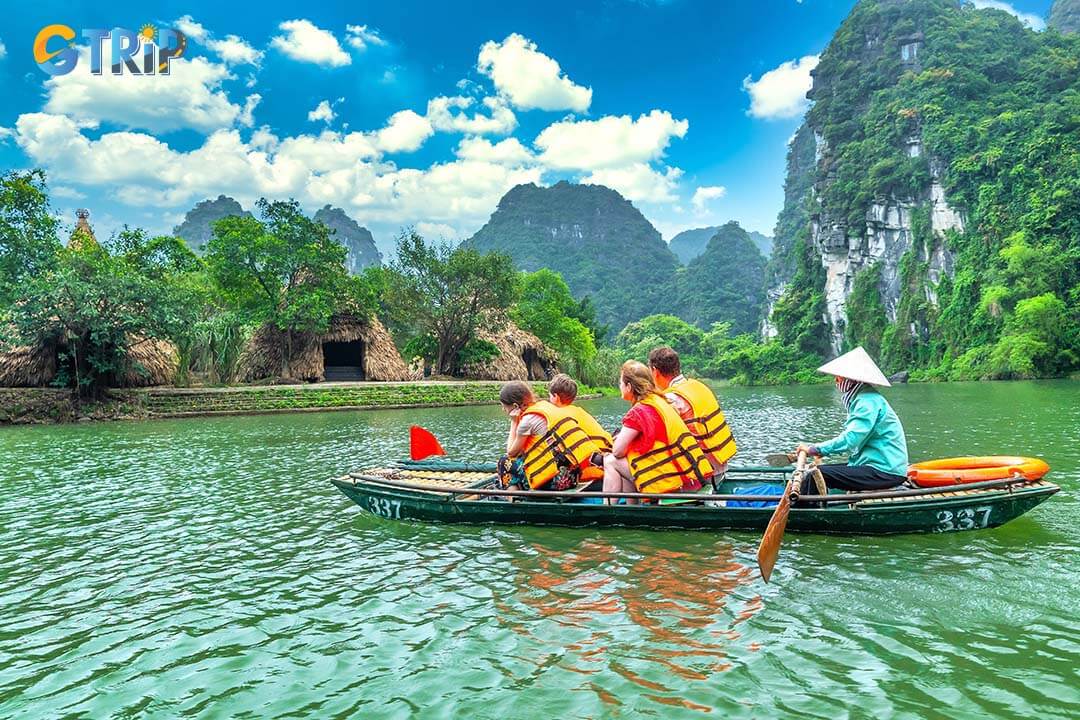
Tourists float by boat on the river of the Tam Coc
A must-see destination in Ninh Binh
The grandeur of Bai Dinh Pagoda, with its towering structures and expansive grounds, showcases the rich cultural heritage of Vietnam. Visitors can marvel at Southeast Asia’s largest bronze Buddha statue and the impressive Arhat Corridor, lined with 500 stone statues.
The surrounding natural beauty – characterized by lush greenery, limestone mountains, and serene landscapes – enhances the overall experience. Whether you are a spiritual seeker, a culture enthusiast, or a nature lover, Bai Dinh Pagoda offers a unique blend of cultural insights and breathtaking views, making it a top destination for both pilgrims and tourists alike.
In conclusion, a visit to Bai Dinh Pagoda promises a journey through a stunning architectural site and an enriching experience that deepens one’s understanding of Vietnam’s spiritual and cultural landscape.




